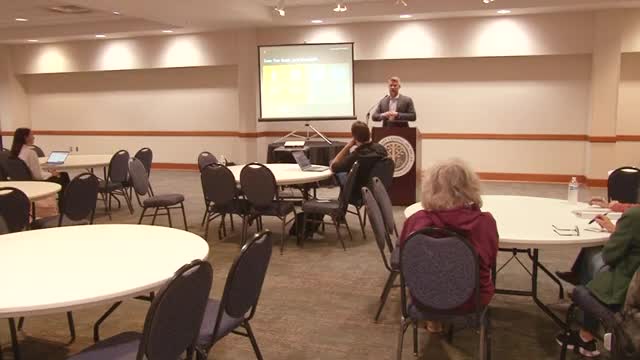Housing market stuck as demand outpaces limited supply
September 30, 2024 | East Lansing, Ingham County, Michigan
This article was created by AI summarizing key points discussed. AI makes mistakes, so for full details and context, please refer to the video of the full meeting. Please report any errors so we can fix them. Report an error »

A recent government meeting highlighted significant challenges in Michigan's housing market, particularly the stagnation in home sales and the growing demand for compact, amenity-rich neighborhoods. Participants discussed how many seniors are reluctant to move unless financially viable options become available in desirable areas, leading to a bottleneck in the housing market. This stagnation is exacerbated by the lingering effects of the COVID-19 pandemic, which resulted in fewer homes being listed and intensified competition for the limited properties available.
The meeting underscored a shift in buyer preferences, with a notable demand for smaller homes located near essential services such as bookstores, coffee shops, and schools. Despite this trend, only 3% of Michigan's housing supply meets these criteria, leaving a significant gap between market demand and available housing options.
High-demand areas like Grosse Pointe, East Grand Rapids, and Ann Arbor exemplify this scarcity, where prices have surged due to limited supply. The discussion also touched on concerns regarding gentrification, particularly in neighborhoods with higher populations of color. Participants noted that even without new developments, many neighborhoods are experiencing a slow, invisible gentrification as younger, higher-income individuals move in, forcing long-time residents to sell their homes.
The meeting concluded with a call for more diverse housing options to address these pressing issues, emphasizing the need for policies that facilitate the development of compact, walkable communities to meet the evolving needs of Michigan residents.
The meeting underscored a shift in buyer preferences, with a notable demand for smaller homes located near essential services such as bookstores, coffee shops, and schools. Despite this trend, only 3% of Michigan's housing supply meets these criteria, leaving a significant gap between market demand and available housing options.
High-demand areas like Grosse Pointe, East Grand Rapids, and Ann Arbor exemplify this scarcity, where prices have surged due to limited supply. The discussion also touched on concerns regarding gentrification, particularly in neighborhoods with higher populations of color. Participants noted that even without new developments, many neighborhoods are experiencing a slow, invisible gentrification as younger, higher-income individuals move in, forcing long-time residents to sell their homes.
The meeting concluded with a call for more diverse housing options to address these pressing issues, emphasizing the need for policies that facilitate the development of compact, walkable communities to meet the evolving needs of Michigan residents.
View full meeting
This article is based on a recent meeting—watch the full video and explore the complete transcript for deeper insights into the discussion.
View full meeting
